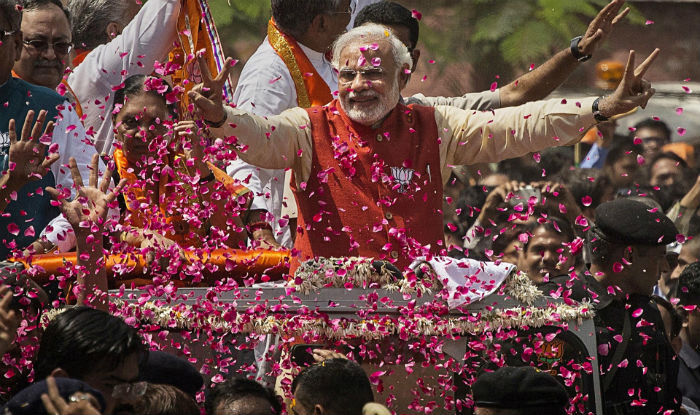
Kabir or Bhagat Kabir was a 15th century Indian mystic poet and saint. Kabir Ji’s compositions influenced the devotion of the Hindi state to a deep level. His writings can also be seen in the Adi Granth of Sikhs.
Sant Kabir Jayanti is celebrated at the full moon in the Hindu month of Jyeshtha, between May and June, on the Gregorian Calendar. This year, it falls on June 4. Saint Kabir did not celebrate any religion. He condemned the social evils, rituals, superstitions and severely criticized social evils. During his lifetime many people of both Hindu and Muslim religions were very critical of him.
Saint Kabir wanted to make Acharya Ramananda his mentor. But Acharya Ramananda refused to make him his disciple. Saint Kabir decided in his mind that I would make Swami Ramanand his mentor. For this, when Kabir went for a bath at four o’clock in the morning, Saint Kabir lay on the stairs of his path. When Ramanand’s foot fell on Saint Kabir’s body, Ramanand Ji came out of his mouth. Saint Kabir accepted the word Rama from the mouth of Ramanand ji and accepted it as his mentor.
Saint Kabir himself was not educated, so he did not write any scripture himself and spoke from his mouth and his disciple had written it. The glory of Ramnama is echoed in his thoughts. They believed in a god.
Life and teachings
Das Kabir Das, a mystical poet and great Saint of India, was born in the year 1440 and died in 1518. According to Islam, the meaning of the Kabir is something very big and great. Kabir Panth is a huge religious community that identifies Kabir as the originator of the Sant Mat sects. The members of Kabir Panth are known as the Kabir panthis who had extended all over the north and central India. Some of the great writings of the Kabir Das are Bijak, Kabir Granthawali, Anurag Sagar, Sakhi Granth, etc. It is clearly not known about his birth but it is noted that he was raised by a very poor Muslim weavers family. He was very spiritual and became a great Sadhu. He got fame all over the world because of his influential traditions and culture.
It is considered that he got all his spiritual training from his Guru named, Ramananda, in his early childhood. One day, he became a well-known disciple of guru Ramananda. Kabir Das house has been accommodated for students and scholars for living and studying his great works.
There is no clue of the birth parent of the Kabir Das as he was founded in Lehartara, a small town in Varanasi by the Niru and Nima (his caretaker parents). His parents were extremely poor and uneducated but they heartily adopted the little baby and trained him about their own business. He lived a balanced life of a simple householder and a mystic.
It is believed that he received his spiritual lessons from Guru Ramananda of Sant Kabir. Initially, Ramananda did not agree to consider Kabir Das his disciple. Once upon a time, Saint Kabir Das was lying on the steps of a pond and was reciting the mantra of Rama-Rama, Ramananda was going to bathe in the morning and Kabir came under his feet. Ramanand felt guilty for that activity and Kabir Das ji urged him to accept him as his student. It is believed that Kabir’s family still lives in Kabir Chaura, Varanasi.
Kabir Matha
Kabir matha is located at the Kabir Chaura, Varanasi, and Lahartara, Varanasi in the back passageways where saints are busy singing Kabir Ke Dohe. It is the place of giving real education of life to the people. Neeru teela was the house of his parents the Neeru and Neema. Now it has become the accommodation for students and scholars who study Kabir’s work.
Philosophies
Sant Kabir was prejudiced by the existing religious mood of that time like Hinduism, Tantrism, as well as the personal devotion, was mixed with the imageless God of Islam. Kabir Das is the first Indian saint who has coordinated Hinduism and Islam by giving a universal path that could be followed by both Hindus and Muslims. According to him, every life has a relationship with two spiritual principles (Jivatma and Paramatma). His view about the moksha was it is the process of uniting these two divine principles.
His great work Bijak has a huge collection of poems that shows Kabir’s general view of spirituality. Kabir’s Hindi was a dialect, simple like his philosophies. He simply followed the unity in God. He has always rejected the murti pujan in Hinduism and shown clear confidence in bhakti and Sufi ideas.
His Poetry
He had composed the poems in a concise and simple style resonating with the admiration of a factual guru. Although being illiterate he had written his poems in Hindi, mixing some other languages like Avadhi, Braj, and Bhojpuri. Although many people insulted him he never gave attention to others.
Legacy
All the poems and songs credited to the Sant Kabir exist in several languages. Kabir and his followers are named according to his poetic response such as banis and utterances. The poems are called dohe, shloka, and Sakhi. Sakhi means to be memorized and to remind the highest Truth. The memorizing, performing, and pondering over these utterances comprises for the Kabir and all his followers a way to the spiritual awakening.
Kabir Das Contribution
Saint Kabir Das, a Bhakti and Sufi movement saint of medieval India, is extensively for his Bhakti movement in North India. His life cycle is centered in the region of Kashi (also known as the Banaras or Varanasi). He was related to the weaving occupation and cast of Julaha. His immense contribution towards the Bhakti Movement in India is considered as a pioneered one along with the Farid, Ravidas, and Namdev. He was a saint of combined mystical nature (Nath tradition, Sufism, bhakti) which made him of a distinctive religion of his own. He said that the path of suffering is the real love and life.
In the fifteenth century, people in Varanasi were strongly influenced by the Brahmin orthodoxy as well as learning centers. Kabir Das worked hard to preach his ideology as he belonged to the low caste, Julaha, and made people realize that we all are human. He never felt difference among the people whether they are prostitutes, low caste, or of high caste. He preached to everyone by gathering his followers. He was ridiculed by the Brahmins for his preaching activities but he never criticizes them back and that’s why he was much liked by the common people. He started reforming the mind of common people towards the real truth through his couplets.
He always objected to the ritualistic and ascetic methods as a means of salvation. He said that goodness’s ruby has more value than the ruby mines. According to him, one’s heart with goodness includes all the prosperity of the whole world. A person with mercy has strength, forgiveness has real existence of him, and an individual with righteousness can easily attain the never-ending life. He said that God is in your heart and ever with you, so offer inward worship to him. He had opened the mind of common people by one of his examples that, if the traveler is not able to walk; what can the road do for traveler.





Be the first to comment